
The main function of a robot vacuum cleaner is to suck up dust—and some devices feature an extra mopping pad. With the Yeedi Mop Station however, this extra feature—mopping—becomes the main characteristic. With a self-cleaning station, the Yeedi Mop Station is a brilliant concept, but is the execution worth the investment? Check out our review!
Yeedi Mop Station: Where can I buy one?
The Yeedi Mop Station can be found on e-tailers like Amazon in the US starting at $799.99. However, that figure can get even lower, as Yeedi is currently offering a crazy $200 discount on Amazon. By applying the discount coupon, the Yeedi Mop station can be purchased for just $599.99.
Disclaimer: This article is part of a collaboration with Yeedi. The manufacturer has no influence on the final rating and NextPit’s editorial opinion.
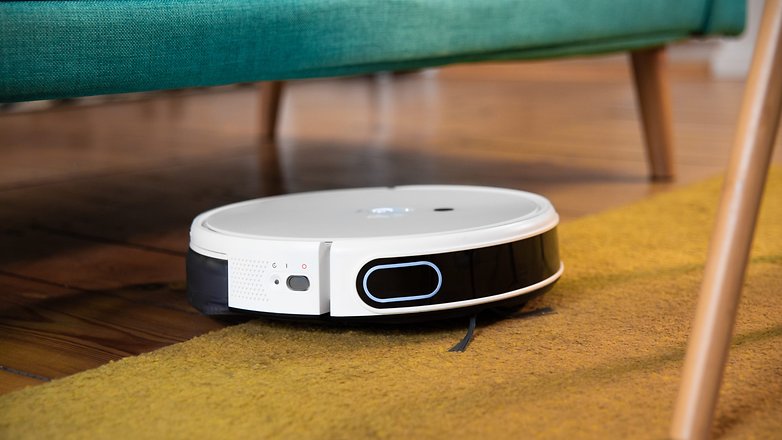
Unboxing and setup
Like all vacuum robots and mops, the Yeedi Mop Station is pretty large and takes up lots of space.
The fact that we have a complete cleaning station with integrated water tanks demands it. In addition to the space occupied by the cleaning station, whose dimensions measure 411 x 382 x 430 mm, it is still necessary to maintain a distance of 0.5 meters on the sides and 1.5 meters in front for the robot to properly be able to park itself.
What I liked:
- Simple installation and quick setup.
- Comprehensive quick start guide.
What I disliked:
- Time-consuming optical mapping process, no LiDAR sensor.
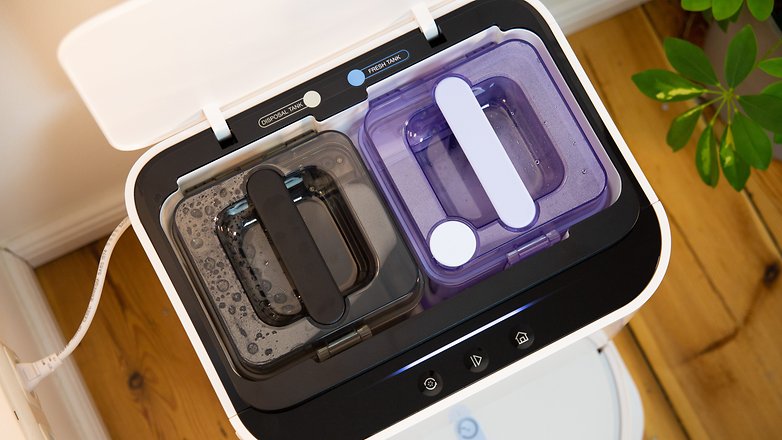
In this box, we have the self-cleaning and charging station, a power cord, the robot vacuum, the side brush, two sets of mopping pads, plates for attaching the mops, a water tank and a dirt tank, an external cleaning tool, and the manual for using the device. As usual, Yeedi has cobbled a very complete and easy-to-understand quick start guide.
The Yeedi Mop Station uses the manufacturer’s standard application to control the robot vacuum and cleaning automation features. To start using the robot, you will first need to download the Yeedi app on your smartphone or tablet (Android or iOS), then simply create an account and follow the instructions directly on the app. Since the robot has a camera that is located at the top to measure the space, adding the model happens via a QR code using the camera lens.
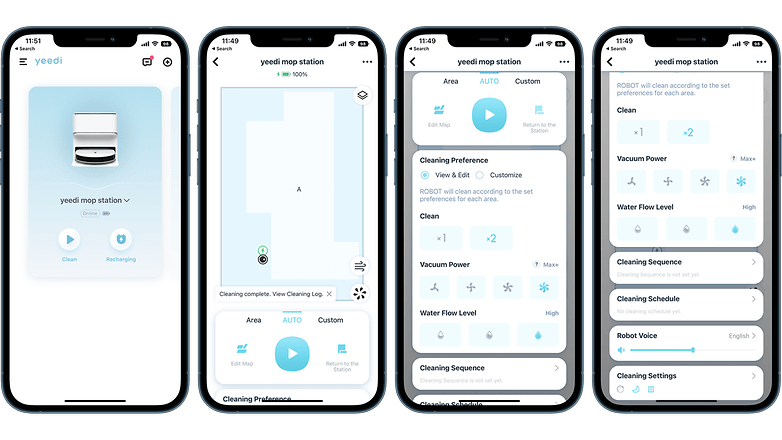
The robot itself is well-designed, with a visually noticable front panel for the sensors that reminds me of the helmets of the iconic Daft Punk duo. The Yeedi Mop Station uses the 2.4GHz network frequency for internet coverage for a larger area.
That said, once the set-up is complete, the next step is to map out the house. Here, the Yeedi Mop Station is quite slow here as it uses a camera and not a LiDAR sensor as other more expensive models. After removing all obstacles from the way, such as shoes, cables and books, I started mapping a 33m2 area that took exactly one hour to complete.
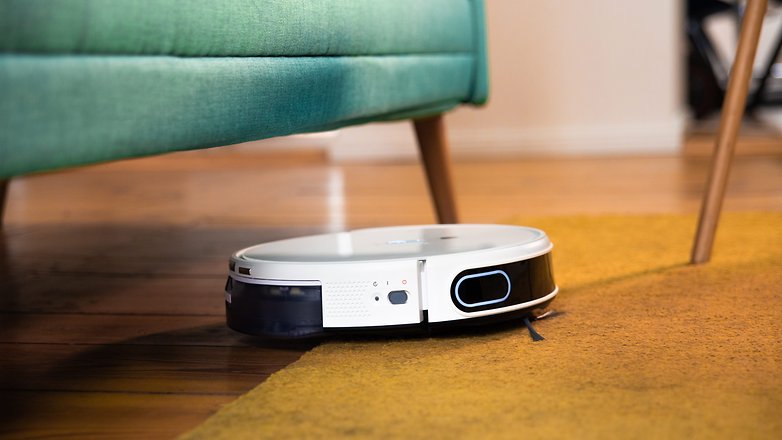
Suction and wiping performance
With a suction power between 200 and 2,500 Pa, and a 200 minute runtime in standard mode, the Yeedi Mop Station is below average for its category.
We also have an edge brush for dirt collection and a main brush that assists in vacuuming tasks. Like almost all the other Yeedi robots we have reviewed, this model also has a camera for mapping on the top, collision sensors, and a front bumper. Among the sensors within, there are fall detection and carpet sensors located at the bottom.
What I liked:
- Easy-to-use app.
- Allows you to schedule the cleaning.
- Allows you to designate areas to perform a localized cleaning task.
- Advanced mopping feature.
What i disliked:
- Poor built-in camera quality.
- Poor performance in Standard Mode.
- Constantly bumps into things at random.
- Does not allow splitting areas.
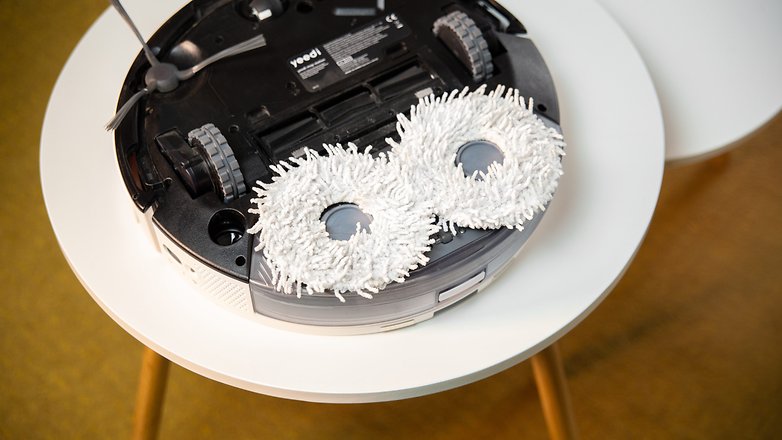
The Yeedi Mop Station’s mapping system uses visual Simultaneous Localization and Mapping (SLAM) technology, i.e. the camera sensor positioned on top of the robot vacuum cleaner maps out the environment. This type of mapping has proven to be inefficient in different reviews that we have done, and you can our Yeedi Vac Max review for additional details.
Using SLAM, the robot maps the surroundings in relation to its own location for navigation purposes, but this is sometimes inaccurate. Collisions with furniture happen frequently, and the robot tends to experience difficulty in recognizing when doors are opened or closed. In the case of the Yeedi Mop Station robot, this was no different.
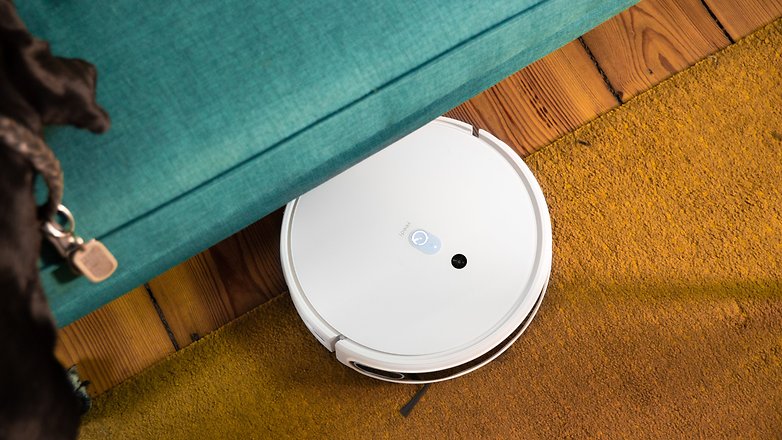
Aside from the inaccuracy and navigation problems, it struck me that this robot is rather slow at cleaning. This can be problematic depending on the size of your house or apartment, because for better performance, you will have to use the Mop Station in Max+ mode, which consumes much more power. In the table below, the performance of the vacuum cleaner in standard mode is noticeably poor.
As part of our standard robot vacuum cleaner review matrix, we conducted a hands-on review using four types of dirt commonly found in the home. Here the vacuum was set to Standard and Max+ mode, and it is worth mentioning that our test scale is accurate to 0.1g. The results are shown in the table below and were performed on a tiled floor:
| Test volume (g) | Standard suction volume (g) | Standard efficiency (%) | Max+ suction volume (g) | Max+ efficiency (%) | |
|---|---|---|---|---|---|
| Rice | 9.8g | ||||
| Oats | 9.6g | ||||
| Coffee | 9.7g | ||||
| Sand |
Mopping performance
However, this is not a simple robot vacuum cleaner. Yeedi offers an advanced mopping feature with two rotating brushes, which you don’t easily find in other models. Considering that this is the primary selling point of the Yeedi Mop Station, and that the manufacturer does not deliver a cleaning performance of more than 94% at the highest suction level, the two cleaning pads located at the back of the robot play the most important role in eliminating dirt.
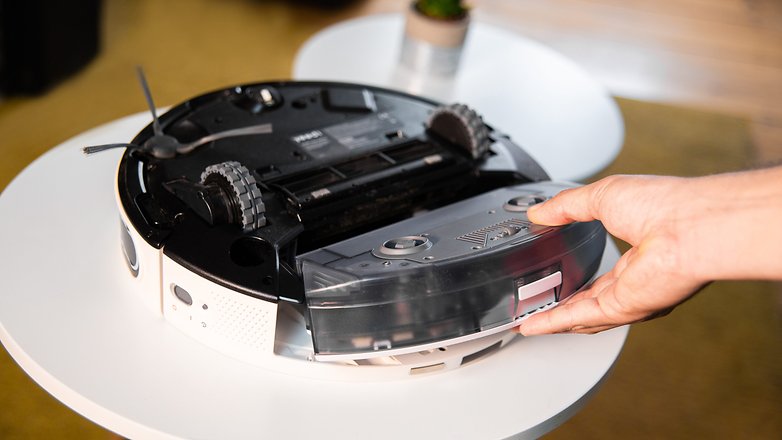
That said, if you have spilled something on the floor, such as sauce or milk, it is still recommended to do a spot clean first, let the robot return to the self-cleaning station, and then begin the normal cleaning process. This prevents the pads from spreading dirt instead of cleaning the floor. After all, you would do the same in the cleaning process with a manual floor mop. In fact, rotary mopping pads offer a downward pressure of 10N, the equivalent of just over 1kg.
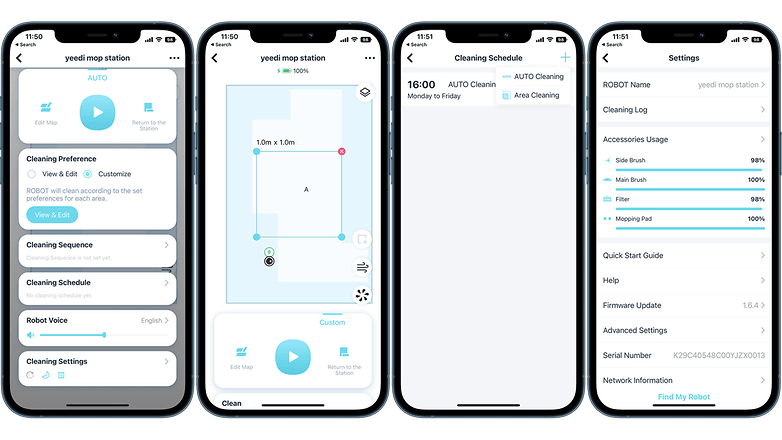
Here, unlike models like the Roborock Q7 Max+, which also have a cleaning station, the Yeedi Mop Station washes the mopping pads inside the self-cleaning station. This means that the dust bin has to be manually emptied, in addition to the constant maintenance of the water and disposal tanks so as to prevent foul odor from building up. The station is also responsible for drying the pads, a process that takes approximately six hours.
Finally, when it comes to battery life, the Yeedi Mop Station offers a 5,200 mAh battery and 200 minutes of runtime in standard mode. However, this time is greatly reduced when using the robot at its maximum capacity. A full recharge takes approximately 6 hours, which can be a problem when cleaning large houses and apartments.
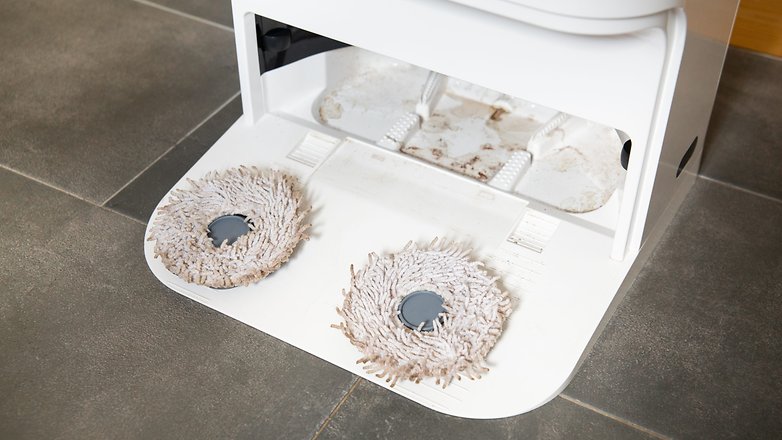
Is the Yeedi Mop Station any good?
The concept of the Yeedi Mop Station has its appeal, as it can be used for a more advanced cleaning than “just vacuuming” with its two mopping pads scrubbing the floor wherever it goes. In addition, the self-cleaning station offers even more convenience. In our tests, the Yeedi Mop Station proved to be a good device, but only when it runs at its highest level of performance.
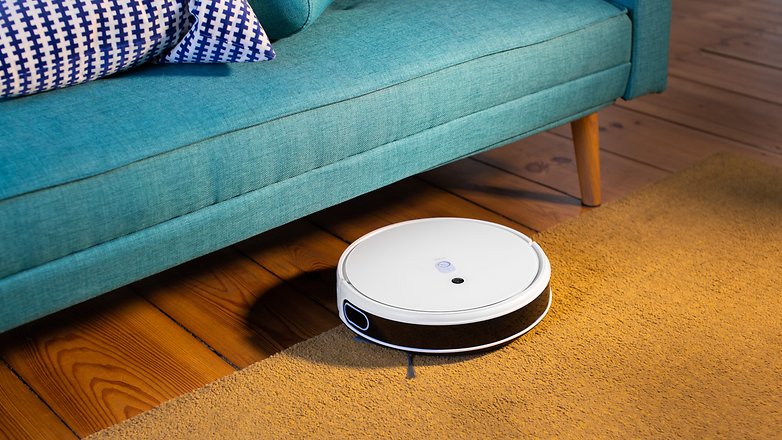
Like Yeedi’s other robot vacuums, the control system is a bit limited and the navigation technology somewhat limited. However, with time and dedication, you’ll learn how to get the best out of this smart device. The Yeedi Mop Station is clearly recommended for apartments and large houses, but be prepared to invest a little more maintenance than with more advanced stations that also auto-empty the dust tank.
Overall, the Yeedi Mop Station is still a solid recommendation for those who want a device with a mopping function that offers a more than just satisfactory level of cleaning.






